This post was first written in 2016 to give alternatives to owners who do not have air-conditioning spaces for their dogs, rabbits or older cats to seek refuge in during hot spells. The original version went viral and continues to have a global reach. We update this post on an intermittent basis to add new information as it becomes known.
There are several basic ways to keep your pet cool in summer: but it is amazing how often these basic steps are overlooked and the poor pet, most often dogs, but we do see rabbits and sometimes cats & birds*, then present with heat-related complications. (*Birds have specific requirements for temperature regulation, the advice below is tailored more for dogs, rabbits and elderly cats).
Links to some of the products mentioned in the article below are to be found at the very end of the post
- First: Don’t walk your dog on a hot day.
If you want to take your dog for a walk in the “cooler” part of the evening, first walk outside barefoot onto the path and road you want to walk the dog on. If your feet are finding it hot and uncomfortable, spare a thought for your poor dog who has to go for a long walk with you! It is no wonder dogs chew and lick their feet more in summer, but it isn’t just from allergies and cut grass contact issue. Often your dog suffers a degree of burnt and painful pads and toes from daily walks on hot tarmac and concrete.
Watch the back of uncovered Ute trays as another potential burn surface for your pet’s feet.
Walking the dog on grass can be more pleasant for the dog if it is not allergic to grass. Always avoid areas of freshly mown or mulched grass especially if these areas have been recently sprayed by local councils etc. Many dogs will react to the freshly mown or chemically treated grass. Synthetic sport surfaces and Artificial grass can reach dangerously high temperatures; Avoid synthetic play surfaces and sports grounds on walks. Please don’t resurface your own pet’s whole backyard with these products as small dogs have low clearance, so we see skin lesions of abrasions and burns on their bellies and sore/singed feet on all sizes of dogs.
Sand can also be very painful to walk on in heatwave conditions. If you do take your dog for a cooling ocean swim, then consider whether you can safely carry them to and from the water,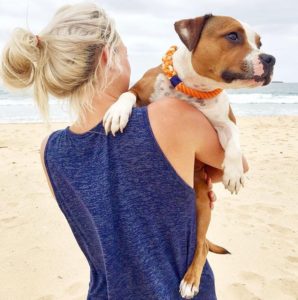 (without injuring your own back in the process).
(without injuring your own back in the process).
Length of the walk on a warmer day.
Never take your dog on an avoidable walk if ambient temperature is over 30C.
Below 30C, a max of 20mins for an excitable or hyper active dog, that being 10mins out and back.
30mins max. for a calmer slower dog.
These are maximum times, it is up to you the owner, taking all the issues mentioned above re ambient and radiant heat etc- to make sure the walk lasts no longer than is safe for your individual pet; even if that means no walk at all that day. As vets we are so sad to see an owner bring a dying, previously healthy, dog into to us that had been taken for a walk because the owner thought their dog was fit enough to take the heat…
- Length of Coat.
Shaving long haired dogs helps cooling methods considerably, to the point that some Specialist Emergency Vets believe shaving heat-stroke dog patients has saved the pet’s life.
Research has shown reducing fur thickness from 10 to 5m could lower body temperature especially where the ambient temperature is above 35C. Too long a coat can also interfere with the effectiveness of cooling clothing.
Ideally your pet should be visiting your favourite dog groomer not later than Late Spring each year to help prepare the coat for the upcoming heat.
- Cooling Clothes for your Pet.
Most dogs love these and they are great to keep them cool when walking. “CoolWeave” is one such site that sells the vests.
The coats are not an excuse to run your dog ragged, just to allow them to cool faster after a walk.
Cooling collars
We have as yet no personal experience of using these types of collars.
Work in human medicine recently validates cooling the neck area to reduce vasoconstriction of the carotid artery to help prevent heat-stroke induced reduction of blood supply to the brain. The work on carotid cooling works in man has been extrapolated superbly to horses where similar anatomy ensures it is effective.
Can we claim the same effect in dogs/cats given the differences in their anatomy? It appears that we can’t extrapolate from humans/horses to dog re cooling collars. The heat exchange mechanism below the brain in dogs means that cooling the carotids sadly is unlikely to be an effective strategy to avoid heat stroke in dogs.
The weight of the collar when wet on the neck has always been a concern for me. We advise for those owners who do have the collars to use the collars at the home as a cooling pad for the dog.
A family friend purchased a cooling collar for her pet which the dog loves to wear at home or in the car. 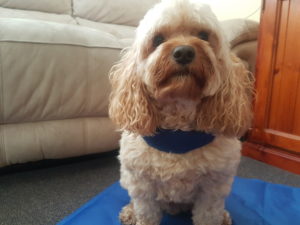 This dog makes a point of stretching out his neck to maximise the amount of his neck in contact with the cool pad. However, his owner had made the observation that the weight of the wet collar was too much on a walk; but for cooling down and sleeping well, the collar seems to provide this pet with good indoor relief from the heat.
This dog makes a point of stretching out his neck to maximise the amount of his neck in contact with the cool pad. However, his owner had made the observation that the weight of the wet collar was too much on a walk; but for cooling down and sleeping well, the collar seems to provide this pet with good indoor relief from the heat.
Boots/Shoes#: If you do insist on taking the dog for a walk, consider a set of the protective dog boots for your pet. Since 9/11 and the loss of rescue dogs in the days after from damaged pads, most police and rescue dogs wear these boots as the norm, so there are now many on-line outlets selling these boots. At the end of this article is a link that compares 8 types of boots including those boots most suitable for hot surface work. If you need to rinse your dog’s feet after a walk, cool water or 50/50 white vinegar and water is a safe solution to clean or soothe a sore paw. Do NOT use TCP, Dettol, Savlon etc. on your pet’s feet (or anywhere else on their body either).
Video of Tyson with his boots: https://youtu.be/XGCG2sjQw2Q
However, no boots# etc will protect the smaller dogs and puppies from the radiant heat beaming back up off hot concrete, striking the dogs on their underbelly, face, eyes and ears. These little dogs exist and walk in an almost separate micro-climate to that of the tall dogs and upright humans. The closest humans would get to experience what it is like for these little pets is when blasts of radiant heat coming off the hot concrete hits exposed human shin skin-most unpleasant-but just imagine if your eyes, face and mouth were also being blasted like that on a long walk… which is exactly what is happening to your small dog on its walk.
If in doubt-leave the dog resting at home while you go out properly attired for your own exercise.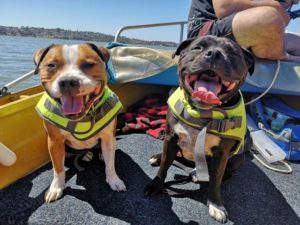
- Fans: Don’t EVER Depend on a Fan to Cool your Hot Pet.
As explained in our Facebook alert- -FANS WILL NOT COOL DOWN DRY PETS to any significant degree. Please share this warning as we see heat distressed pets whose owners have thought using fans will cool the pet down. Thinking a fan is “better than nothing” is dangerous thinking as that logic has resulted in owners relaxing, thinking that their pet will be ok once the fan is on. If the temperature is soaring and or your dog is showing signs of heat distress, do not lull yourself into a false sense of security that putting on the fans is all you need to do to help your pets..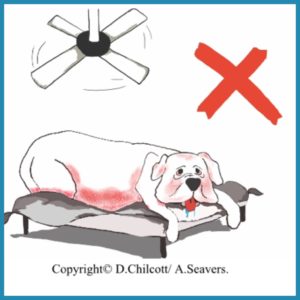
Fans work on humans because we sweat profusely over a large part of our bodies. Pets only sweat from specific non-furred areas of their bodies. If you want to cool a pet down using a fan, you have to WET the pet first and then sit them near a fan.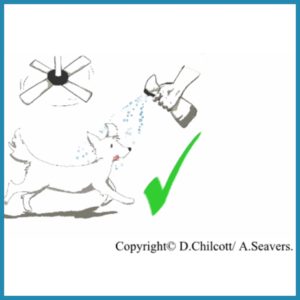
If you use a hose to spray your pet down, please flush out the water in the hose out first as that first water can often be very very warm.
Leaving a sprinkler on in non-drought times can be very helpful to your pet.
Once the pet is wet, place them near a Fan, making sure to keep any water away from all electrical items.
A wet t-shirt will work on a short haired dog but does not work so well on a well-haired pet.
Putting a heat distressed pet in the shower and running cool (or iced-2017) water fast over the dog and working the water into the fur and onto the skin will help as well.
Many Kmart type outlets sell large clam-shaped play or sand pits for human children. The half clam shells work great for our furkids when filled with water. Just make sure you leave it under shade. If you own a smaller dog, make sure to only shallow fill the clam with water to below your pet’s lying height if you are leaving the pet unattended for any period of time. Greyhounds immersed in a cold-water bath in a cooling shell will cease to pant in 3 mins so well worth having one of these shells in every fur-family back yard.
Ideally the access to these clams should be supervised as without water these clams can get airborne and full with water poses other issues. One workaround is to fill the shell with the buckets of water intended for the garden and allow the dogs play time in it. Use up the water on the garden beds then flip up the clam and lock it away. That way the clam is not then seen as a giant chew toy by those dogs who are chewers and also stays within drought water use rules. If the dog was discovered heat distressed then the empty clam could be quickly moved to and filled with cooler water where the dog was as that is easier to achieve than try to lift a collapsed Labrador etc to a heavy clam full what may be tepid stagnant water.
Many thanks to Dr Jane McNicholl who provided this photo. Dr Jane advises her breeders of active breeds to get their pups used to water tubs so there is no drama when the animal needs to use one to cool down.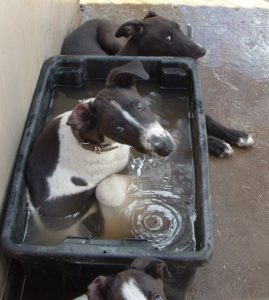 This pup seems to have got that message loud and clear!
This pup seems to have got that message loud and clear!
- ICE is your pet’s friend.
Ice cubes lined up into a plastic freezer bag, then into a long sock make a great cooling pack. The ideal place for a very heat distressed pet is to place this long cylindrical ice pack into the armpit, groin and neck areas. Ice, applied to these areas is more beneficial to the hot pet than placing water just about anywhere else on the pet’s body. You can also freeze plastic water bottles, slip these into an old sock and sit in the groin and armpit areas, under the neck or just lay up against the pet’s belly. You don’t put the ice on the feet area as that makes the pet feel it’s cold and then the body tries to stop losing heat. The workaround is to cheat and place the wrapped ice directly in the armpits, groin, and neck.
Freezing large ice blocks in old ice-cream containers overnight and tipping out into the water bowl or onto the grass the next morning makes a great treat for the dog. For more advice on feeding frozen dog treats safely read: http://tinyurl.com/jy5ol6r
Taking chilled water or ice cubes in a sports bottle for your dog to access on a walk is helpful.
Ice cubes in the water bowl indoors and outdoors is also a good tip to help keep your pet cool: especially important for the short-nosed pugs and bulldog-like breeds, who get heat distressed very easily. We have a hilarious video, sent in by our client whose Great Dane taught herself how to work the ice-maker on the fridge door so she can help herself to ice without waiting for the humans to realise she needs some. http:/a24a5be7a6076556c8c2f16e5065bd40/OakFlatsVet/videos/1617509738324606/
- Drinking Bowls
Make sure you have more than one water bowl out as some dogs like to drink; then tip the bowl over to empty it leaving it and its pals without any source of drinking water.
Refill bowls with fresh cold water each time.
Keep the bowls in shade and avoid plastic or steel bowls in the warmer months.
In extreme heat, some of our clients provide a bowl of LECTADE electrolyte replacement for dogs. /a24a5be7a6076556c8c2f16e5065bd40/OakFlatsVet/videos/296189374330941/
There are some smart Chill bowls that keep the water cold for hours. I prefer the designs where only the cooling insert is put in the freezer to activate, not the actual bowl from which the dog drinks. Keeping the dog’s actual drinking bowls away from areas of human food storage and preparation is a more hygienic approach. The Frosty Bowlz design below fits that brief. 
If your pet is a mad chewer of all sorts of weird objects, then you need to ensure the freezer insert for this bowl is not something your pet could be at risk of chewing. If so, look at other cold-bowl options that represent less of a chewing opportunity.
- Cool Beds
Simple things like letting your pet lie on cool tiles or wetting a towel to have them lie on can help keep your pet comfortable.
As mentioned above* you can get cooling mats of different types for dogs. I like the Cool Champion blanket as it is lightweight, folds up small and you only need water to activate it, so great to have handy in the car or when traveling.
Mats for use in the home can be as simple as the $15 Chill out Cooling Mat or $29 mattress topper.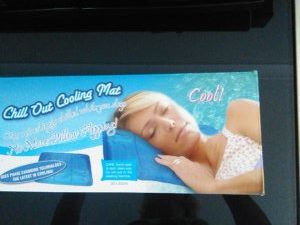 These mats are sold for humans and great for migraine sufferers to keep cool, but they work well for our pets. These mats are not as versatile as the champion cool mats but are still useful. Placing these plastic mats in the fridge for about 15 mins can cool them down even more. I don’t leave the pets unsupervised when lying on these mats as you don’t want the pets to chew or swallow the contents. Kmart also sells a cool gel bed for Dogs for around $15. Again, do not leave unsupervised on these beds in case the pets chew the filling.
These mats are sold for humans and great for migraine sufferers to keep cool, but they work well for our pets. These mats are not as versatile as the champion cool mats but are still useful. Placing these plastic mats in the fridge for about 15 mins can cool them down even more. I don’t leave the pets unsupervised when lying on these mats as you don’t want the pets to chew or swallow the contents. Kmart also sells a cool gel bed for Dogs for around $15. Again, do not leave unsupervised on these beds in case the pets chew the filling.
- Rabbits
Rabbits are at high risk of heat distress in hot weather. Keep their hutch in the shade and keep it well hosed down with cool water to help keep them cool.
- Geriatric Pets.
Senior to elderly pets can be hiding early onset of heart or kidney disease until the warm weather hits and suddenly their health will deteriorate literally overnight. Slowing down, sleeping more, soft cough or reluctant to get up can be signs of heart distress. Please see your vet if your pet is showing any of these signs. In the interim, if you have air-conditioning, then put it on for the pet, if not for yourself.
- Emergency Visits to the Vet.
If you do need to rush your pet to the vet:
- Start cooling your dog down BEFORE you put them into the car ie start their cold water baths and cold water drinking.
- Open all the windows in the car, let the heat out and run the air con to cool the car down BEFORE you put the pet in it.
- If you don’t have air-con in the car: Place a damp towel loosely on the pet and/or place wrapped ice bricks in the pet’s armpits.
- Restrain the pet safely in the car,
- Drive to your destination with your windows down to let the breezes in.
- Do NOT wrap a collapsed animal in a blanket and hug it to your body as you race to the vet. The pet must be allowed to keep cool (not frozen either) on the journey.
- Even if your pet has recovered at home from a heat-collapse episode, ring your Vet, advise them of the event and organise to have the animal checked (at a cooler time of the day) for any problems related to circulation or liver and kidney function.
- Sunburn
Pets burn too. While most young to senior cats seem more resistant to the effects of very hot weather, cats suffer from sunburn more than most other pets. Try to provide as much shade as possible outdoors etc.
Filtabac cream is suitable as a sunblock for most pets but, as always with any new product, always patch test a small area on your pet first to make sure there is no reaction.
Dogs can be additionally protected with a T-shirt or a RASH Vest.
Links to good websites for protective clothing for pets can be found on our Oak Flats Vet Clinic App under the tab for Medical clothing and Accessories websites. Our Oak Flats Vet Clinic App is free to download either by clicking on the App logo on the top right-hand side of our Homepage / or via Google and iTunes stores.
One item becoming popular is the use of dog specific strollers so that old or injured dogs can still get out in the cooler air days allowing the dogs to enjoy some mental stimulation. One of our clients has provided the image below of a very sturdy pet stroller they use: it also acts as a type of walking frame support for the injured human owner as well, so a win all round.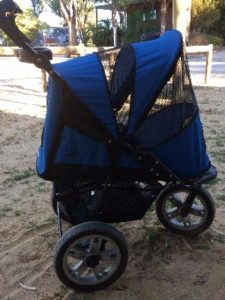
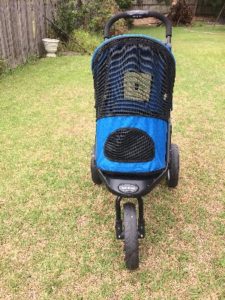
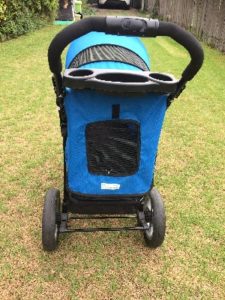
- Always Have A Plan B.
Whilst keeping your pet inside with the aircon on is the best option, we do suffer electrical power failures when the demand for electricity soars. Keep spare ice blocks and bags aside for your pet and perhaps keep some wet towels in the spare beer fridge and freezer to use in an emergency as well.
Finally: Cats, as usual, are different. Whilst healthy cats can suffer heat stroke, it is much rarer as their preferred ambient temperature is 30-38C. This means you have to provide most Healthy cats with a space to escape air-conditioning if the cat so wishes.
However, Older cats with Kidney disease or Hyperthyroidism may be vulnerable to heat stroke so customise the care for each cat.
For more on the Heat specific needs of Cats read : /cats-risk-lives-search-heat
This is an active dynamic post which we hope to keep updating with new tips and suggestions on a regular basis.
Links:
Boots: http://tinyurl.com/y87sguwm
Video of Tyson wearing his ‘afp’ boots as he walks on grass.
Fun video of Bo wearing his water boots so his paws are not cut by the river bed stones when he is cooling down in the river. https://www.instagram.com/p/Bd3qElejhH8/
Vests/Mat: http://www.coolweave.com.au/k9_cooling_vest.htm
Collars: http://www.personalcoolingproducts.com.au/.
http://k9softdogcrates.com.au/polar/polar-collars.
Bowls: /ee6cdc7b87fa7495c797f8e15600723b/FrostyBowlz_Chilled_Pet_Bowl_p/3700.htm
My thanks to the CVE Sydney Uni, to Drs Terry King, Jane Mc Nicholl & Meg Brownlow for sharing their expertise in Heat Distress in dogs. Much of the information contained above is a compilation of the wonderful answers these experts have provided to the many questions CVE vets have raised in the Control & Therapy Journal over the last four years.
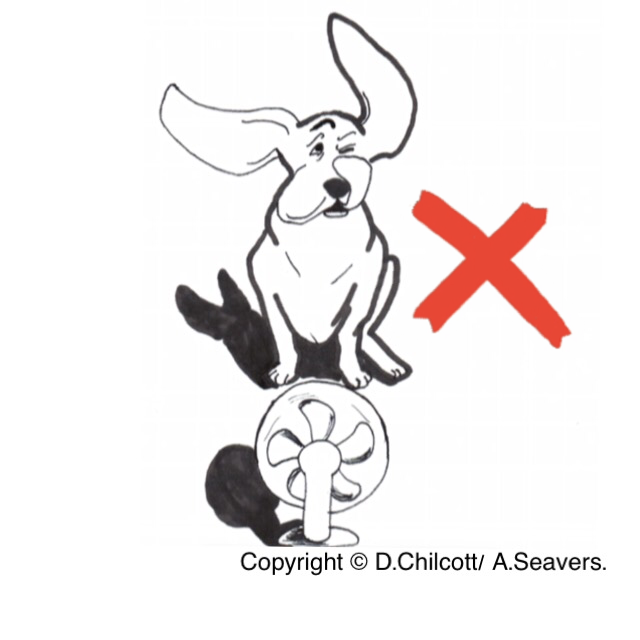
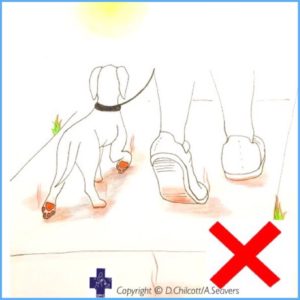
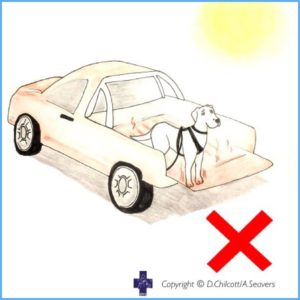
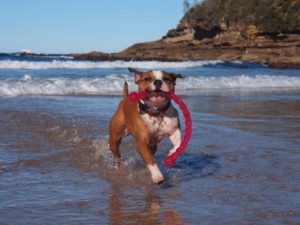
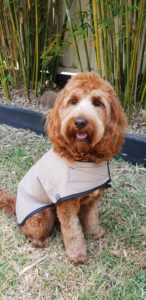
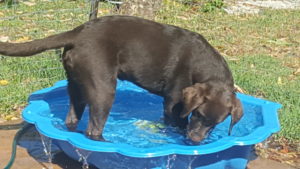
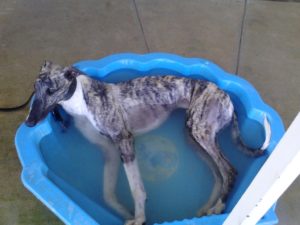
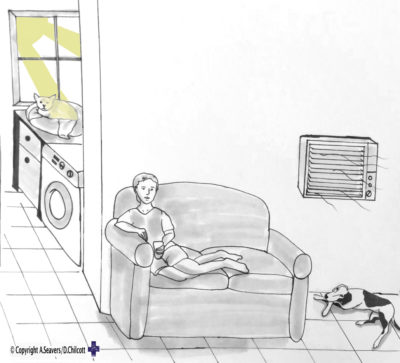
Note that was Frank’s third pool. LOL
What a lucky dog he is then to have such dedicated owners.
Hey there,
My name is Alex from the PetsForHomes, and I just read this very interesting post on your site on how to keep pets cool and safe in summer.
That post is very informative and inspiring. It contains a good parcel of advice.
Take care of yourself!